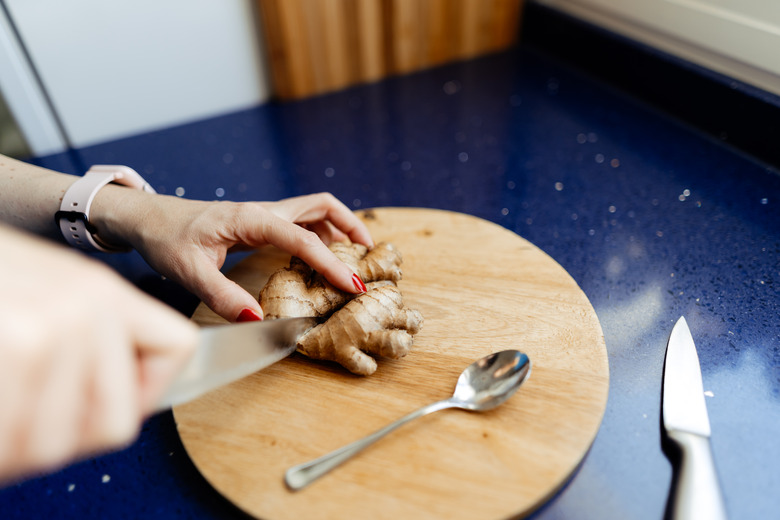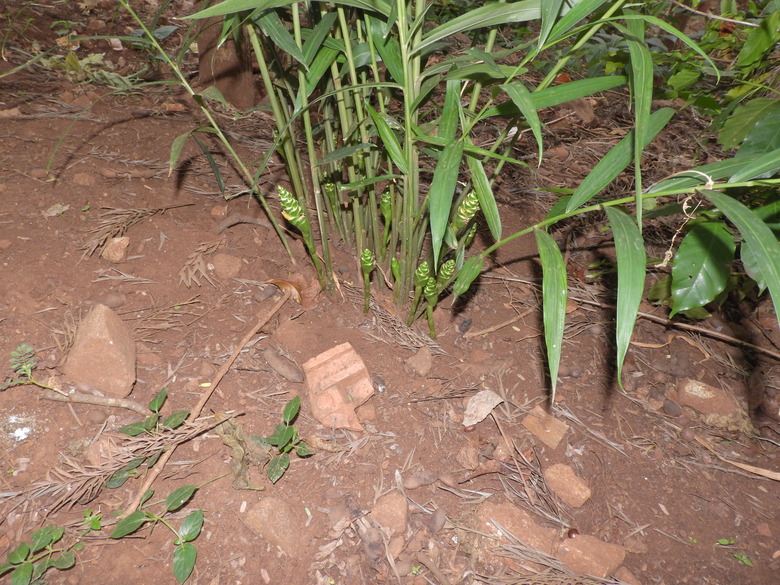Should I Throw Out Ginger Root That Has Mold?
What Can You Do With Moldy Ginger?
Moldy or rotten ginger may not be good for eating but, if it's not too rotten, it can be used to grow a whole new plant.
Ginger (Zingiber officinale) grows best within U.S. Department of Agriculture plant hardiness zones 8 to 12, but gardeners in cooler climates can also grow it indoors as a potted plant. Many ginger roots sold in grocery stores are treated with growth inhibitors to prevent sprouting, but soaking the root overnight in water will help eliminate the growth-inhibiting chemical and allow the root to sprout.
Tip
Moldy ginger should not be eaten, but the root can be used to grow a new plant.
Salvaging Moldy Ginger for Planting
Not only does ginger go bad, it goes bad very easily when kept in the type of humid conditions in the vegetable drawer of most refrigerators. Fortunately, it's simple to cut away the rot from ginger root to save large portions of the tuber after it starts to turn bad.
Inspect the ginger root and cut off any soft, discolored or moldy portions using a sharp paring knife that has been wiped down with rubbing alcohol. According to the UC Master Gardeners of Santa Clara County, to grow a new ginger plant, you should choose a piece of ginger that's 1 to 3 inches long with multiple eyes.
The University of Florida IFAS Extension recommends drying ginger root for a few days prior to planting to seal up the cut ends, which will help keep it from rotting in the soil. Set the root in a warm, dry place indoors for a week or so. Flip over the root segments every day to allow for even drying.
The root pieces are ready for planting when they appear dried out on the ends. Throw away any root pieces that develop mold during the drying process.
Planting Ginger Root
Ginger root needs warm soil to sprout, so it's best to start it indoors in a pot. Use a clay or plastic pot that's at least 2 inches larger than the root, which will provide enough space for the root to reproduce.
Fill the pot with lightly moistened potting soil. Plant the ginger root in the center of the soil, with the bottom at a depth of 1 inch and the top of the tuber slightly exposed to the light. Be sure to plant it with at least one of the eyes pointing up toward the soil surface, which will encourage proper stem growth.
Set the pot in a bright, sunny spot indoors such as on a south- or west-facing windowsill. Soil temperatures must stay above 68°F for ginger to grow, but it grows best at temperatures around 77°F, according to the University of Wisconsin-Madison Extension.
A propagation mat may be necessary to warm the soil, but it's not required unless the room is very cold. Keep the soil on the dry side until leafy growth emerges from the soil, which typically takes a few weeks.
Growing Ginger Plants
Ginger plants need plenty of light, warmth and moisture to produce a good crop of roots for harvest. In warm climates where winter temperatures stay above 50°F, ginger can be planted outdoors in a garden bed, but the plants should be kept in pots and brought indoors during the winter months in cooler climates.
Ginger plants perform best in full sun but need some light midday shade in hotter climates. The North Carolina State University Cooperative Extension recommends growing the plants where they will receive two to five hours of direct sunlight each day, in the morning or evening. In winter, bring potted ginger plants indoors and place the pot near a south-facing window.
Ginger needs plenty of water, but the soil must be allowed to dry out between waterings to prevent fungal growth around the root. Feed the plants monthly with liquid fertilizer applied at half the recommended rate.
Ginger roots take eight to 10 months to reach a harvestable size. Typically, the rhizomes or roots are ready for harvest immediately after the plant blooms.

